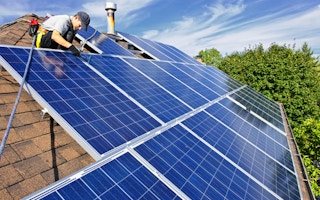The 30 largest engineering, procurement and construction (EPC) companies in the global PV sector expanded their share of the world’s non-residential PV capacity last year by 5 per cent, according to a new report by research group IHS Technology.
The IHS PV EPC and Project Market Tracker report from IHS’ Power & Energy service found that global non-residential PV additions climbed 20 per cent in 2013, providing a major boost to the leading EPC firms.
“We see integrators in the US and China rapidly executing very large pipelines, which accounts for some of the notable growth last year,” said Josefin Berg, senior analyst for solar demand at IHS.
The overall growth in the non-residential sector made led to a quadrupling of installations for China’s TBEA Sun Oasis to approximately 1 GW – putting the integrator in second place, behind No. 1 the EPC operator, Arizona-based First Solar, which doubled its installation capacity in non-residential markets to more than 1.1 GW, according to IHS.
“
The global PV pipeline tracked by IHS adds up to 114 GW in nearly 10,000 projects in various stages from under construction to early- phase planning
Nine of the world’s top 10 entities are Chinese and US integrators that actively pursue large utility-scale projects, mainly conducted in their home markets, the report found. IHS predicts growing local opportunities will propel these leading companies to gain further market share.
The only European-based integrator among the top 10 in 2013 was Abengoa of Spain, which is pursuing opportunities in the US to build up installations worth 260 MW.
According to HIS, the trend will continue in 2014 as China and North America maintain their momentum as the markets to watch for large utility-scale PV.
Planned PV projects in US and China swell to 50 per cent of global PV pipeline
“Currently under construction in the United States are at least 2.5 GW worth of projects larger than 20 MW, and plans for another 2.1 GW are afoot in China,” the report says. Globally, 123 projects larger than 20 MW are also being built in other countries, amounting to some 7.6 GW in total. IHS predicts First Solar will maintain its position among the top three leading integrators this year in view of the 770 MW the company is currently constructing.
The global PV pipeline tracked by IHS adds up to 114 GW in nearly 10,000 projects in various stages from under construction to early- phase planning. Half of this capacity is in the US and China. Of the global pipeline, 10 GW is under construction, while another 10 GW has secured power purchase agreements (PPA) or other contracts.
“The road from first planning a project to final execution is paved with challenges,” Berg noted. “Even after permits have been secured, PPAs signed and suppliers identified, troubles in obtaining finance or overhauled government policies can block or delay projects. This is particularly true in emerging markets, but financing can be a challenge also in more mature European markets.”
Tougher market for regional PV integrators in Europe
In the UK, the highly competitive PV environment has left two major PV integrators, S.A.G. Solarstrom AG and Wirsol AG, insolvent in the midst of high ambitions. As a result, Wirsol had to sell off its 100 MW pipeline to Conergy AG.
According to IHS, the UK’s trimmed Renewable Obligation Credits (ROC) scheme led to higher financial risks for EPC suppliers in Britain, which are expected to cover all costs during the construction process, until the projects are accredited for ROC, a process that can take more than six months after project completion.
“This long process put system integrators at risk of running out of cash before the project is sold and paid for,” Berg observed. “Consequently, the most successful EPC companies building PV plants in the U.K. are either backed by venture capital, or form part of larger construction groups.”
In the former category is an integrator like Solarcentury; in the latter are players like Isolux Corsan, Martifer, Oskomera and Goldbeck.










